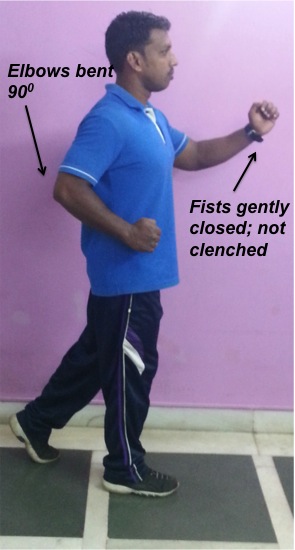A 46 yr old highly successful, overweight man was called as a chief guest at an exhibition cricket match in a state capital. He was requested to take the first symbolic run across the pitch. He collapsed mid-way and the post mortem showed cause of death as Acute Myocardial Infarction (Heart Attack); all his arteries were filled with cholesterol deposits.
This is a true story!
Research has conclusively proven that two of the strongest predictors of premature mortality (early death) are sedentary habits and low cardio respiratory endurance (low capacity of heart and lungs to tolerate sudden physical exertion).
Surface walking is a simple, free of cost and one of the easiest ways to get more active, lose weight and become healthier. It’s not recognized as a form of true exercise but walking is ideal for people of all ages and all levels of fitness who wish to be more active.
Regular walking improves your health and fitness by helping you
– Lose body fat
– Improve your fitness and
– Avoid/ delayhigh blood pressure, heart disease, type 2 diabetes, asthma and osteoporosis.
One should try to walk briskly for at least 30 minutes at least 5 days of the week.

Variants to burn more calories, with same speed:
- Arm swing: Moving the arms in opposition direction to the legs, helps counter balance the motion of the legs. When the speed increases, pumping the arms from the shoulder instead of the elbow joint while keeping the elbow bent at a 90 degree angle helps ensure burning 5 to 10% more calories and ensures upper body workout. Keeping the wrists straight and hands unclenched (fists gently closed) reduces fatigue. The arms should be swung in a small arch with the elbow coming to about the middle of the chest and as far back as the buttocks.<insert image arm swing.jpg>
- Lengthening the stride: Swinging the extended arms freely with increased vigor and aiming for a faster pace (6 Kmph or above) is also beneficial. As the pace increases, the feet should land closer to an imaginary centerline stretching in front.
- Reverse walking: It strengthens the quadriceps, hamstrings, abdominals and back muscles. Starting slowly at first waking only a quarter of a kilometer; increase the distance covered gradually. Reverse walk on a plain surface like a track/ beach to avoid running into traffic or other pedestrians/ walkers.
- Walking against the resistance offered by water in a pool/ lake or sand on a beach at a steady pace can burn 300 to 500 calories per hour. Walking 2 Kmph in thigh-high water/ dry sand where feet sink above the ankles is equivalent to walking 3 Kmph on land.
Gradually slow down your pace, before you stop, to cool down. Finish off your session with a few gentle stretches, which will help improve your flexibility.
Beware, walking for daily chores is not exercise; you must walk briskly, for health.




Please comment with your real name using good manners.